Engineering Mechanics: Unit IV: Friction
Angle of Friction and Resultant Reaction
The normal reaction N and the frictional force Fr can be combined to give a resultant R called the resultant reaction as shown in Fig. 8.5.1.
Angle of Friction and Resultant Reaction • The normal reaction N and the frictional force Fr can be confined to give a resultant R called the resultant reaction as shown in Fig. 8.5.1. • The angle made by this resultant R with normal reaction N is called the angle of friction ϕ. where ϕk is called angle of kinetic friction. • If direction of applied force P is changed, keeping its angle with the surface of contact same throughout, the resultant R will take different positions in space but making the same angle ϕ with the normal reaction N. • In such a case, R lies on the surface of a cone known as cone of friction as shown in Fig. 8.5.2. • If an object is kept on an inclined plane and the angle of inclination θ is increased, motion impends for a certain value of θ known as angle of repose. • The angle of repose is equal to the angle of friction. • This can be proved as follows: • Consider F.B.D. of an object kept on an inclined plane of angle θ equal to the angle of fepose as shown in Fig. 8.5.3. • Problems involving dry friction can be solved using either N and Fr or using R and ϕs.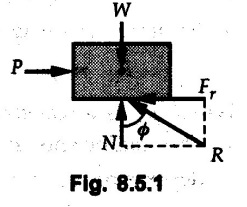
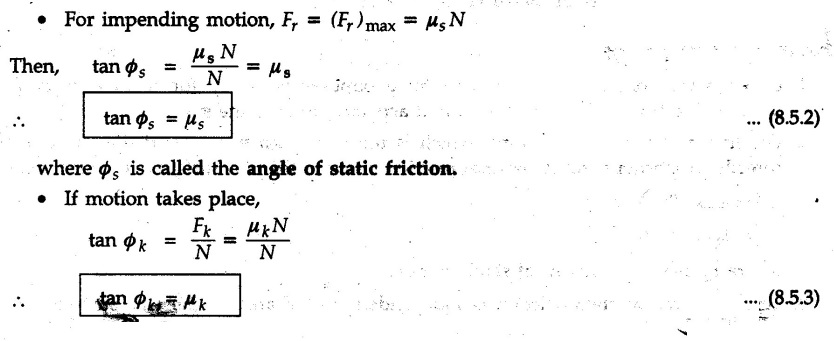
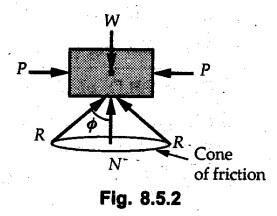
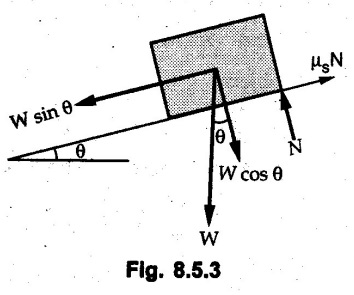
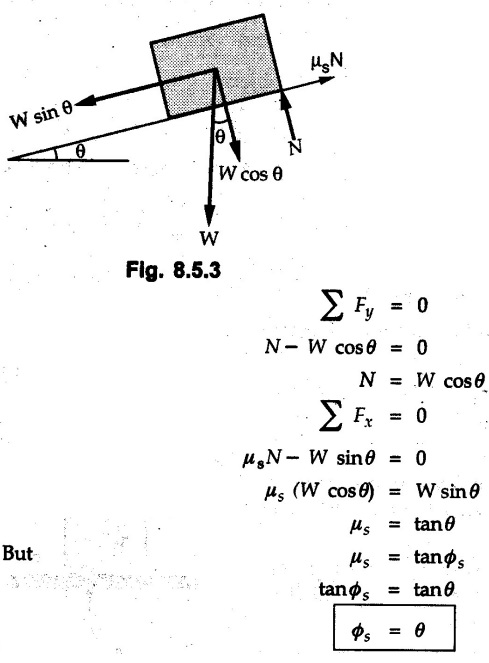
Engineering Mechanics: Unit IV: Friction : Tag: : - Angle of Friction and Resultant Reaction
Related Topics
Related Subjects
Engineering Mechanics
ME3351 3rd semester civil, Mechanical Dept | 2021 Regulation | 3rd Semester Mechanical Dept 2021 Regulation
